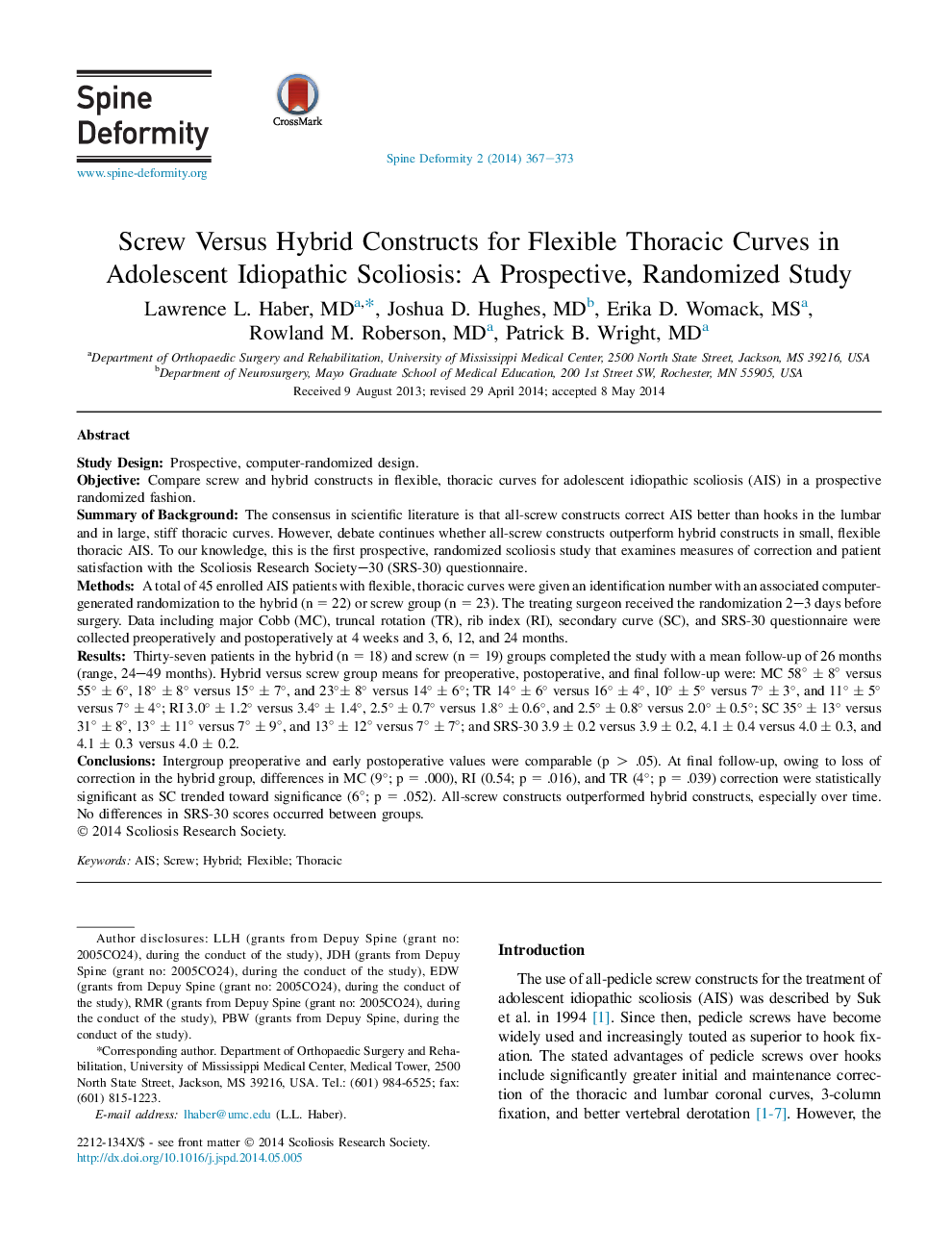| Article ID | Journal | Published Year | Pages | File Type |
|---|---|---|---|---|
| 4095406 | Spine Deformity | 2014 | 7 Pages |
Study DesignProspective, computer-randomized design.ObjectiveCompare screw and hybrid constructs in flexible, thoracic curves for adolescent idiopathic scoliosis (AIS) in a prospective randomized fashion.Summary of BackgroundThe consensus in scientific literature is that all-screw constructs correct AIS better than hooks in the lumbar and in large, stiff thoracic curves. However, debate continues whether all-screw constructs outperform hybrid constructs in small, flexible thoracic AIS. To our knowledge, this is the first prospective, randomized scoliosis study that examines measures of correction and patient satisfaction with the Scoliosis Research Society–30 (SRS-30) questionnaire.MethodsA total of 45 enrolled AIS patients with flexible, thoracic curves were given an identification number with an associated computer-generated randomization to the hybrid (n = 22) or screw group (n = 23). The treating surgeon received the randomization 2–3 days before surgery. Data including major Cobb (MC), truncal rotation (TR), rib index (RI), secondary curve (SC), and SRS-30 questionnaire were collected preoperatively and postoperatively at 4 weeks and 3, 6, 12, and 24 months.ResultsThirty-seven patients in the hybrid (n = 18) and screw (n = 19) groups completed the study with a mean follow-up of 26 months (range, 24–49 months). Hybrid versus screw group means for preoperative, postoperative, and final follow-up were: MC 58° ± 8° versus 55° ± 6°, 18° ± 8° versus 15° ± 7°, and 23°± 8° versus 14° ± 6°; TR 14° ± 6° versus 16° ± 4°, 10° ± 5° versus 7° ± 3°, and 11° ± 5° versus 7° ± 4°; RI 3.0° ± 1.2° versus 3.4° ± 1.4°, 2.5° ± 0.7° versus 1.8° ± 0.6°, and 2.5° ± 0.8° versus 2.0° ± 0.5°; SC 35° ± 13° versus 31° ± 8°, 13° ± 11° versus 7° ± 9°, and 13° ± 12° versus 7° ± 7°; and SRS-30 3.9 ± 0.2 versus 3.9 ± 0.2, 4.1 ± 0.4 versus 4.0 ± 0.3, and 4.1 ± 0.3 versus 4.0 ± 0.2.ConclusionsIntergroup preoperative and early postoperative values were comparable (p > .05). At final follow-up, owing to loss of correction in the hybrid group, differences in MC (9°; p = .000), RI (0.54; p = .016), and TR (4°; p = .039) correction were statistically significant as SC trended toward significance (6°; p = .052). All-screw constructs outperformed hybrid constructs, especially over time. No differences in SRS-30 scores occurred between groups.
